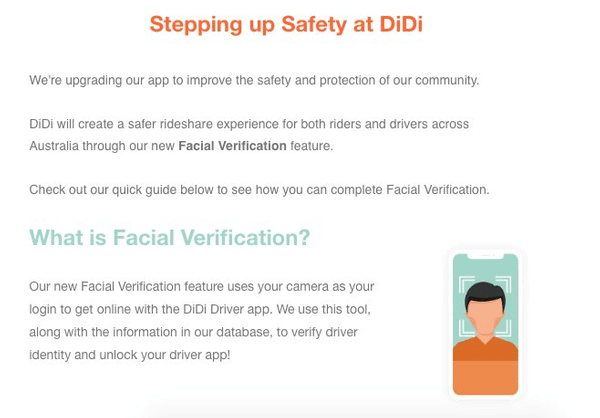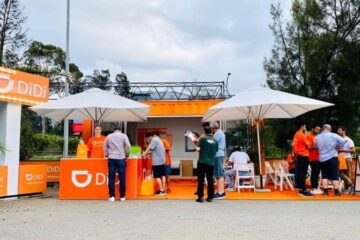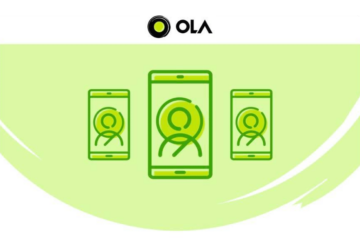Following two other ridesharing companies that have implemented real-time selfie to verify drivers, Didi finally also launched a similar feature called Facial Verification across Australia. A feature that is useful for verifying driver identity, its main purpose is to avoid driver accounts usage by an unauthorized motorist.
This new feature will use the front camera of the smartphone to capture an image from the driver’s face to then match it with the information stored in Didi’s database, in real-time.
There is a slight difference in Didi’s Facial Verification feature when compared to similar features used by other applications. The Uber’s Real-Time ID Check and Ola’s Selfie Authorization will come into play at different times when you’re online, and maybe you won’t receive this kind of verification every single day.
Related Posts
Based on the email received by the driver, it stated that the Didi Facial Verification is required every time a driver wants to go online with the platform. So it’s possible that they have to take a selfie every time they want to drive. If this is true, then a driver could take a selfie more than once a day.
It might be a little troublesome for those who are driving with other providers like Uber and Ola at the same time, as they have to complete facial verification every single time when switching between rideshare apps.
By applying this feature, Didi desires to create a safer rideshare experience, for both drivers and riders across the country. As we know, safety is the top priority for rideshare business as it is related to customer trust.
Facial recognition will make the rider confident they are taking a ride with a verified driver who is authorized to provide passenger service in the city. For drivers, this feature is quite useful to protect their driver accounts from unauthorized use.
The launch of this feature is also a precaution from Didi so as not to lose its license to operate in the country. For your information, Uber has lost its license to operate in London in late 2019 because of the unauthorized use of driver accounts that placed passengers and their safety at a risk.
Previously, the Indian ridesharing firm Ola introduced its similar feature known as Selfie Authorization in Australia and New Zealand in early 2020. This feature was released to complement another Ola’s safety feature that utilized an OTP (one-time passcode) in each trip across the nations.




0 Comments